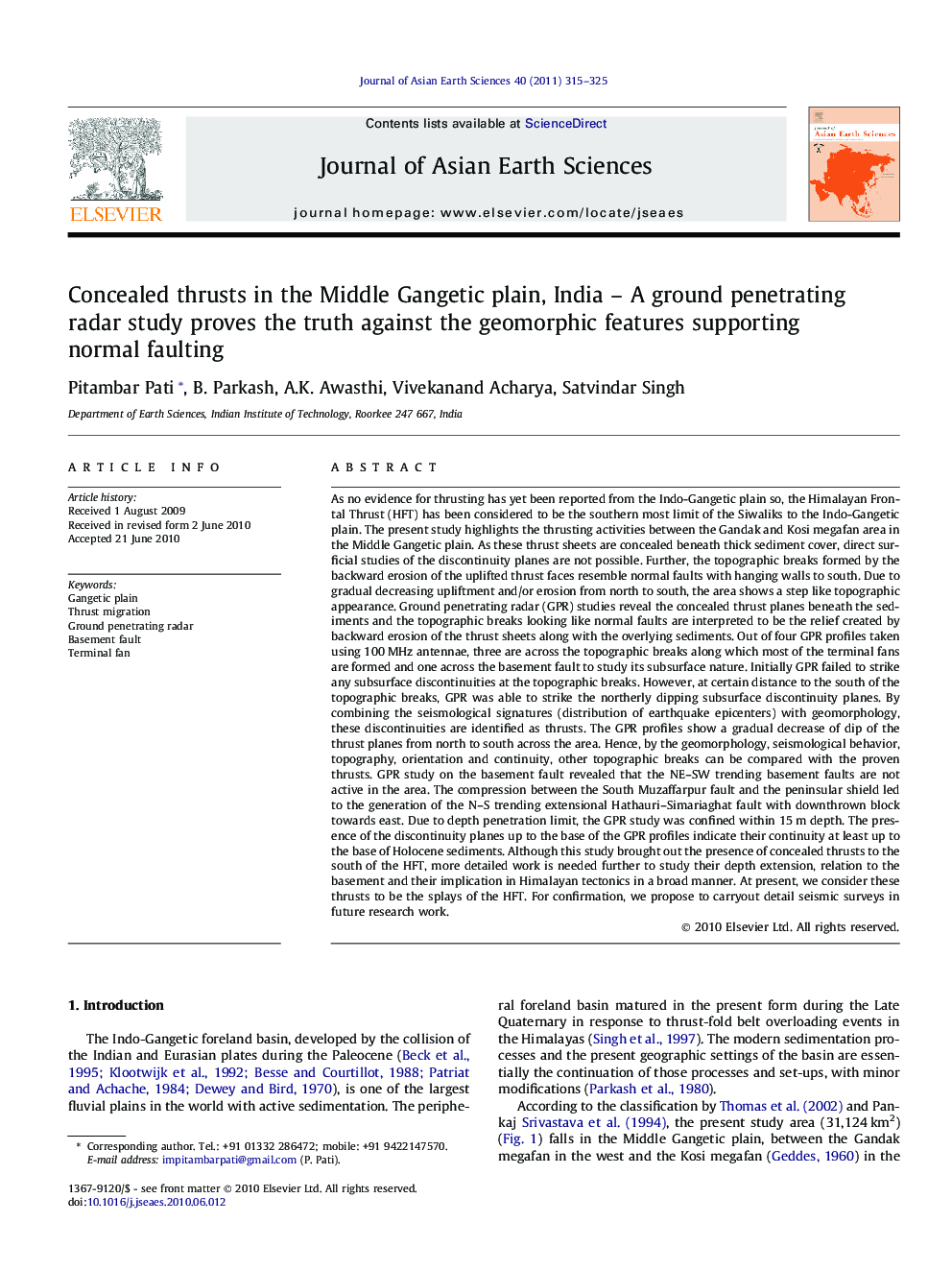| کد مقاله | کد نشریه | سال انتشار | مقاله انگلیسی | نسخه تمام متن |
|---|---|---|---|---|
| 4731801 | 1356822 | 2011 | 11 صفحه PDF | دانلود رایگان |

As no evidence for thrusting has yet been reported from the Indo-Gangetic plain so, the Himalayan Frontal Thrust (HFT) has been considered to be the southern most limit of the Siwaliks to the Indo-Gangetic plain. The present study highlights the thrusting activities between the Gandak and Kosi megafan area in the Middle Gangetic plain. As these thrust sheets are concealed beneath thick sediment cover, direct surficial studies of the discontinuity planes are not possible. Further, the topographic breaks formed by the backward erosion of the uplifted thrust faces resemble normal faults with hanging walls to south. Due to gradual decreasing upliftment and/or erosion from north to south, the area shows a step like topographic appearance. Ground penetrating radar (GPR) studies reveal the concealed thrust planes beneath the sediments and the topographic breaks looking like normal faults are interpreted to be the relief created by backward erosion of the thrust sheets along with the overlying sediments. Out of four GPR profiles taken using 100 MHz antennae, three are across the topographic breaks along which most of the terminal fans are formed and one across the basement fault to study its subsurface nature. Initially GPR failed to strike any subsurface discontinuities at the topographic breaks. However, at certain distance to the south of the topographic breaks, GPR was able to strike the northerly dipping subsurface discontinuity planes. By combining the seismological signatures (distribution of earthquake epicenters) with geomorphology, these discontinuities are identified as thrusts. The GPR profiles show a gradual decrease of dip of the thrust planes from north to south across the area. Hence, by the geomorphology, seismological behavior, topography, orientation and continuity, other topographic breaks can be compared with the proven thrusts. GPR study on the basement fault revealed that the NE–SW trending basement faults are not active in the area. The compression between the South Muzaffarpur fault and the peninsular shield led to the generation of the N–S trending extensional Hathauri–Simariaghat fault with downthrown block towards east. Due to depth penetration limit, the GPR study was confined within 15 m depth. The presence of the discontinuity planes up to the base of the GPR profiles indicate their continuity at least up to the base of Holocene sediments. Although this study brought out the presence of concealed thrusts to the south of the HFT, more detailed work is needed further to study their depth extension, relation to the basement and their implication in Himalayan tectonics in a broad manner. At present, we consider these thrusts to be the splays of the HFT. For confirmation, we propose to carryout detail seismic surveys in future research work.
Journal: Journal of Asian Earth Sciences - Volume 40, Issue 1, 4 January 2011, Pages 315–325